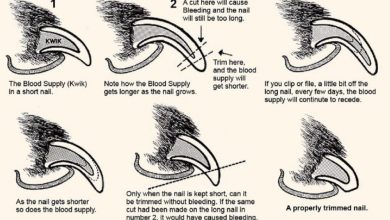Is My Cat Mad At Me For Getting A Dog

1. Introduction
It’s no secret that cats and dogs don’t always get along. But what happens when you bring a dog into your home when you already have a cat? Is it possible for them to live together peacefully? And, more importantly, is your cat mad at you for getting a dog?
These are all important questions to consider before bringing a new pet into your home. While cats and dogs can certainly coexist, there are certain steps you need to take to ensure that they get along. In this article, we’ll discuss the history of cats and dogs living together, common signs that your cat is mad at you for getting a dog, how to introduce a dog to your cat, tips on how to make sure your cat and dog get along, what to do if the introduction doesn’t go well, how to tell if your cat is mad at you for getting a dog, potential behavioral issues with cats and dogs living together, the importance of providing enough space for both pets, the benefits of having both cats and dogs in the household, and more.
2. The history of cats and dogs living together
Cats and dogs have been living together since ancient times. In fact, archaeological evidence suggests that cats were domesticated as early as 10,000 years ago. Dogs were domesticated even earlier – around 15,000 years ago – but it wasn’t until much later that they began living side-by-side with cats in human households.
The first recorded instance of cats and dogs living together dates back to the first century AD in Egypt. Cats were considered sacred animals by the Egyptians at this time, so it was common for people to keep them as pets. Dogs were also popular pets at this time – though not nearly as revered as cats – so it was only natural for them to begin living together in homes.
Since then, cats and dogs have become some of the most popular pet choices throughout the world. While they may not always get along perfectly – or even at all – there are plenty of examples of successful multi-pet households where both cats and dogs live happily together.
3. Common signs that your cat is mad at you for getting a dog
If you’ve recently brought a new dog into your home when you already had a cat, it’s possible that your feline friend may be feeling a bit jealous or resentful towards their new canine counterpart. Here are some common signs that your cat may be mad at you for getting a dog:
• Hiding: If your cat is suddenly hiding away from their usual spots around the house or avoiding contact with people and other pets in the home, this could be an indication that they are feeling overwhelmed or anxious about their new living situation.
• Aggression: If your cat begins displaying aggressive behavior towards either humans or other pets in the house (especially towards the new dog), this could be an indication that they are feeling threatened or uncomfortable in their environment.
• Excessive grooming: Cats often groom themselves as a way of relieving stress or anxiety; if your cat is constantly licking or grooming themselves more than usual, this could be an indication that they are feeling overwhelmed by their new living situation.
4. How to introduce a dog to your cat
When introducing a new pet into any household (especially one with existing pets), it’s important to do so slowly and carefully in order to ensure everyone involved feels comfortable with the transition process. Here are some tips on how to introduce a dog to your cat:
• Start with scent: Before actually introducing them face-to-face, allow them to become familiar with each other’s scents by placing items such as blankets or toys near each other’s beds or sleeping areas. This will help them become accustomed to each other’s presence without feeling threatened by it.
• Allow short interactions: When introducing them face-to-face for the first time, make sure it is done in an area where there is plenty of space for both animals (ideally outdoors). Allow them short periods of time together while closely monitoring their behavior; if either animal seems anxious or aggressive during these interactions, separate them immediately and try again later after they have had time to relax again.
• Create separate spaces: It can also be helpful to create separate spaces for each animal in order to give them both their own “safe zones” where they can retreat if they feel overwhelmed by each other’s presence.
5. Tips on how to make sure your cat and dog get along
Once you’ve successfully introduced your new pet into the household (and assuming they seem comfortable with one another), there are still some steps you can take in order to ensure that they get along well over time:
• Provide plenty of playtime: Make sure both animals have plenty of opportunities for exercise and playtime; this will help keep them active and reduce chances of boredom which can lead to aggression between them over time.
• Give each pet its own space: As mentioned above, it can also be helpful to give each pet its own space where it can retreat if needed; this will help reduce feelings of overcrowding which can lead to tension between animals over time.
• Reward good behavior: Whenever either animal displays good behavior towards one another (such as playing nicely together or simply allowing one another close proximity without displaying aggression), make sure they are rewarded with treats or verbal praise; this will help reinforce positive behaviors between them over time.
6. What to do if the introduction doesn’t go well
If after several attempts at introducing your new pet into the household things still don’t seem like they are going well between them (i.e., one animal displays aggression towards the other), there are still steps you can take in order to improve their relationship over time:
• Separate them when necessary: If either animal displays aggressive behavior towards the other during interactions (or even just when left alone together), separate them immediately until things calm down again; once things have calmed down again try reintroducing them slowly once more following the steps outlined above until things improve between them over time (if necessary seek professional help from an animal behaviorist).
• Spend quality time with each pet individually: Make sure each pet gets plenty of individual attention from you; this will help reinforce feelings of security within each animal which will make it easier for them accept one another over time.
• Provide plenty of distractions: Finally, make sure there are plenty of toys and activities available in order keep both animals occupied while simultaneously helping reduce feelings of boredom which can lead to aggression between animals over time if left unchecked .




